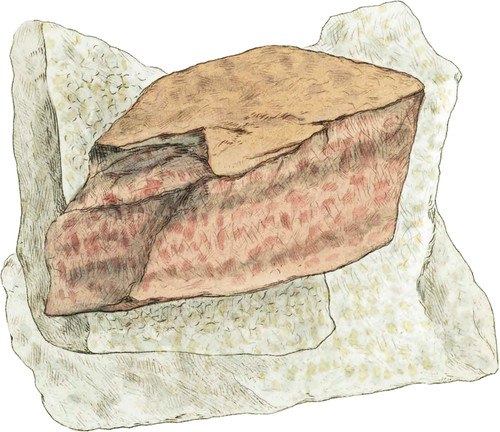 Enlarge
Enlarge
British Mineralogy
Coarse Primitive Marble, or Limestone
A great part of the Earl of Arrays estate at Donegal in Ireland has this Marble in some variety: it much resembles Carara Mar Me, and I think it might he chosen equal in quality if not superior to it. There appears, from the specimens I have seen, and what have been described, to be great choice of it. The front specimen is the common or large-grained variety: it seems composed of regular sized broken pieces, less than peas, of partly crystallized Carbonate of Lime, lying close to each other, and adhering so as to form a tolerably firm and compact mass, sometimes a foot or more thick, and uniform. The present specimen is chosen to show the variety of stratification; it is striped as it were with a mixture of Pyrites, and Mica with the appearance of Chlorite: Mica is also on its surface, and seems to be common to it, and disposed nearly as in Gneiss, dividing it into plates or laminae. The middle piece is of the more common dirty grayish tint, which, added to its coarse grain, renders it unpleasant to those who are used to Italian Marble. The other piece is of a finer grain, and very nearly corresponds with the true Carara Marble above mentioned.
The exposed parts of the rock which is composed of this Marble, are apt to disintegrate and crumble; and, like other stones quarried, it ought to be kept from the sun and air, and dried gradually, if intended for durable uses.

